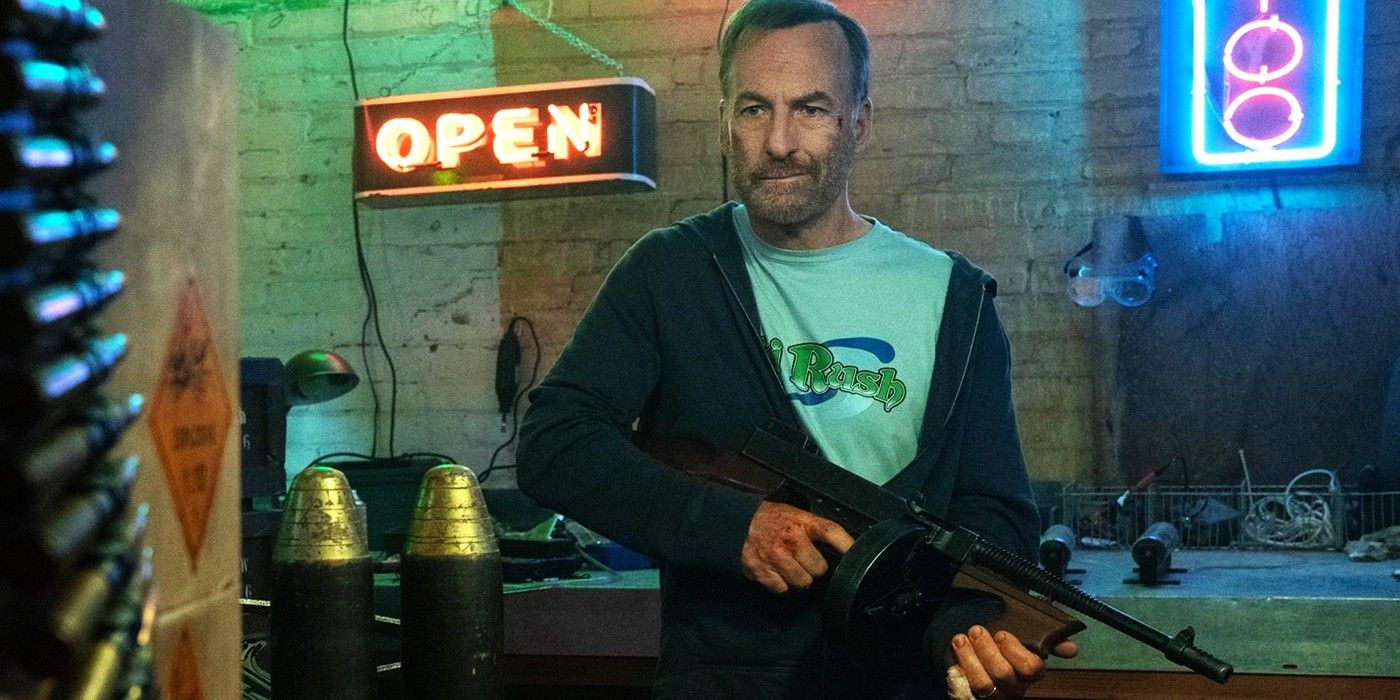The head of ChatGPT on AI attachment, ads, and what’s next


Welcome to Decoder! I’m Alex Heath, your Thursday episode guest host and deputy editor at The Verge. Today, I’m talking to a very special guest: Nick Turley, the head of ChatGPT at OpenAI.
While Sam Altman is definitely the public face of the company, Nick has been leading ChatGPT’s development since the very beginning. It’s now the fastest-growing software product of all time, reaching 700 million people each week.
Nick hasn’t done a lot of interviews, and I had a lot of ideas for where I wanted to take this conversation initially. But then, something eye-opening happened after the launch of GPT-5 last week. People really missed talking to OpenAI’s last model, 4o, so much so that the company quickly brought it back.
As you’ll hear Nick say, he wasn’t expecting this kind of backlash, and it’s already changed how OpenAI plans to shut down models in the future. To me, the whole episode says a lot about how attached people have become to ChatGPT. So, I pressed Nick on this topic quite a bit.
We also talked a lot about the future of ChatGPT itself, including whether it will ever show ads, the progress OpenAI is making on hallucinations, and why he thinks the product eventually won’t look like a chatbot at all.
Okay. Here’s Nick Turley, the head of ChatGPT at OpenAI.
This interview has been lightly edited for length and clarity.
Nick, I really appreciate you doing this. You haven’t done many interviews, so it’s exciting to have you on the show. We’re taping this the week after the rollout of GPT-5, which I think gives us a lot to talk about.
I actually wanted to start with the rollout itself and the reaction specifically to you all taking away GPT-4o, because I think that says a lot about the way people are using AI and the way they feel about it. I’m wondering whether that reaction surprised you.
Yeah, first of all, thanks for having me. I’m stoked to be here and I’m still processing the launch. It was a big one for us. We’re at a scale now with 700 million users where there are many surprises that are just kind of baked in when you operate with this many users and they’re all different. So I mean, to answer your question, yes, I was surprised about a few things.
One, I think we really need to think harder about how we change and manage such a large population of users. In retrospect, not continuing to offer 4o, at least in the interim, was a miss and we’re going to go fix that and make it available to our ChatGPT Plus users. Secondly, I was also surprised by the level of attachment people have about a model. It’s not just change that is difficult for folks, it’s also actually just the fact that people can have such a strong feeling about the personality of a model.
We actually just rolled out the ability to choose your own personality in ChatGPT, which is a small step. But it’s clearly something about 4o that we need to go understand and make sure that GPT-5 can solve as well.
Your boss, Sam Altman, tweeted after the rollout that on the topic of attachment, “This is something we’ve been closely tracking for the past year or so, but still hasn’t gotten much mainstream attention.” I think now it’s getting that attention, safe to say.
When you all decided to replace 4o fully with GPT-5 and just put the new model in and not have it be a staged rollout, what was the motivation for that decision? Was it a cost thing? Was it thinking, “Well, yes, people are attached [to the model], but they’re not attached specifically to a model per se so much as to the overall experience?”
Yeah, it definitely wasn’t a cost thing. In fact, the main thing we were striving for, and we’ve been striving for it for a long time, is simplicity. Because from the average user’s perspective — and there’s a lot of average users, they don’t hang out on Reddit or on Twitter or any of those spaces — I think the idea that you have to figure out what model to use for what response is really cognitively overwhelming. We’ve heard very consistently from users over and over again that they would love it if that choice was made for them in a way that was appropriate to the query. They’re coming for a product, not a set of models.
I think we had some of the right intuitions around power users, too, where in the Pro plan, which is our $200 plan, we were very, very adamant that we wanted to preserve all the old models. And we did. I think the miss was just not realizing how many power users we do have at our scale on some of our other plans. And we realized quickly, and the OpenAI style is very much you go listen to your user and you’ll iterate even very, very quickly. And that’s what we did. So the decision was driven by a desire to keep things simple, which I think is the appropriate thing for most folks.
I kind of think products like macOS are a good analogy, where I think they’ve done a really good job of keeping things very simple for most people. But you really can go into settings and you can invoke the terminal, you can turn all the knobs and whistles if you want to. So I kind of want ChatGPT to feel a little bit similar, where it’s simple but you can configure anything you want, and that includes selecting your favorite model if that’s how you roll.
Does the feedback to this launch make you all want to commit to a deprecation schedule for models going forward, where when there’s GPT-6 you go, “Okay, GPT-5 is going to still exist for X amount of time,” are you guys working through that right now?
That’s exactly what we’re working through and I’ll tell you where my head’s at. Maybe by the time this airs, we’ve already decided on how we want to do this, but my thinking is yes, I think we need to. We’re at a scale now where we have to give people some level of predictability when there’s a major change. And we already do this today for our enterprise plan. So it’s really just expanding some of the predictability we’ve built in other parts of the product and bringing it here, too. Our developer APIs have deprecation timelines, so I don’t think it’s as huge of a change as it might seem. It’s just a very clear learning from the rollout.
So how long will 4o be around? Are you committed to a specific timeframe?
Not yet. We want to be sure that we’ve really understood where 4o shines, and if there isn’t a major reason to deprecate it, I’d love to keep it around. So we’ll communicate if we ever have a date where we want to retire it. That’s a clear learning from this, but for now, I just really want to focus on actually understanding whether it’s that people are very particular about 4o for 4o’s sake, or whether there are certain things about 4o. The warmth of the personality is one thing I’ve heard, and we’re going to bring that to GPT-5 as well.
Once we understand, I think there might be a different set of solutions. For example, I’m really excited about the ability to choose your own personality. That’s why we rolled out [that feature] in early preview. I really like Robot personally, but I think many people do not because of a bit of a warmer tone. Robot is one of the names of the personalities.
So, I think there could be different solutions to the problem depending on what we learn. I think there’s just a lot of listening to do, and that’s one of the very unique things about building an AI is that you learn a tremendous amount after you launch. Depending on that, we’ll come up with the right solution. But my commitment is that if we ever did retire 4o, we’d want to give people a heads-up on when and how that’s going to happen, just like we do in the API and on our enterprise plans.
You’re in the process, it sounds like you just said, of bringing what you called warmth, the personality of 4o, to GPT-5. That’s happening right now.
That’s right. This is typical for us. We iterate on the personality of our models constantly. We have a whole team called the Model Behavior team that does a tremendous job doing that. We have things like the spec out there that allow people to actually scrutinize the model behavior that we have so that if the model behaves a certain way, people can easily tell whether it was a bug or intentional.
For that reason, you should absolutely expect iteration on the way that GPT-5 feels and behaves over the coming weeks and even months. We’ve always done that, and GPT-5 is a good moment to keep doing it.
You already mentioned how Reddit is not representative of the majority, which of course it’s not, but you teed me up perfectly. The reactions on Reddit to 4o going away, I thought, were pretty amazing to read. People were saying things like, “I lost my friend overnight. It was my only friend. It feels like someone died. I’m scared to talk to GPT-5 because it feels like cheating. I feel like I lost my empathetic coworker.”
How has that kind of reaction affected the company internally? Is this something that you didn’t fully appreciate, that people had this level of emotional attachment?
As Sam said, we’ve been tracking this type of thing for a while, where we’ve always wondered and frankly also been concerned about a world where people become overly reliant on AI. I think the degree to which people had such strong feelings about a particular model versus maybe the product overall was certainly a surprise to me, in particular because I felt like we addressed a lot of the feedback that people had, constructive feedback that people had on 4o, even vibes-wise with the new model.
So, I think the Reddit comments are really interesting to read because they show just how polarized users can be, where you can get some people with really strong opinions who love 4o and people who have really strong opinions on GPT-5 being better. The level of passion that people have for their choice is quite remarkable. And it recalibrated me a bit.
We put out a blog post about a week or two ago, and in it I spent quite a bit of time outlining our philosophy on what we optimized ChatGPT for. The one point I really wanted to make is that our goal was not to keep you in the product. In fact, our goal is to help you with your long-term problems and goals. That oftentimes actually means less time spent in the product. So when I see people saying, “Hey, this is my only and best friend,” that doesn’t feel like the type of thing that I wanted to build into ChatGPT. That feels like a side effect and it’s therefore worth taking seriously and studying closely, and that’s what we’re doing.
How do you balance that tension between what your goal is for the product and how people are using it, especially in that context? That’s got to be difficult.
I mean, when you operate at the scale of 700 million users, you have to confront the reality that you can have goals that are pure and the right goals. You can do your best to build the product alongside those goals. In our case, it’s really to be helpful to users, including sometimes telling them things they don’t want to hear. And you can have the right goals, but that doesn’t mean that you’re perfect, and that doesn’t mean that people aren’t going to use your product in the way that is counter to your intent.
That’s why they’ve been making a whole set of changes after consulting with experts, which we always do, especially in these sensitive domains. We talked to a large number of mental health professionals, for example, across a number of different countries, to figure out how to handle scenarios where people overly use the product or they use the product in a state where they’re not feeling quite healthy. We’ve already made some changes to the model behavior, and we are going to continue to roll out more of them.
We’ve rolled out overuse notifications, which gently nudge the user when they’ve been using ChatGPT in an extreme way. And honestly, that’s just the beginning of the changes that I’m hoping we’ll make. And we’re a company that can afford to do these things. We really don’t actually have any particular incentive for you to maximize the time you spend in the product. Our business model is extremely simple, where the product is free, and if you like it, you subscribe. There’s no other angle there.
So, I trust our ability to do the right thing, but we still have to do the work and the work has begun and it won’t stop until we feel like we can unequivocally endorse the product to a struggling family member. That’s kind of the thought exercise we often give ourselves: if you knew someone who was struggling in life, maybe they’re going through something, maybe they just had a breakup, maybe they’re lost in life, would you actually recommend ChatGPT to them unequivocally and with confidence? For us, that’s the bar, and we’re going to keep working until we feel that way.
It sounds like, in your own words, that bar hasn’t been quite met, but people are using the product that way anyway. But that’s okay because you’re working towards that goal?
I don’t know if I can confidently say that the bar hasn’t been met. There have definitely been instances where we felt like the product fell short of our own expectations, and when people find themselves in scenarios where they struggle. But to us, I want to be able to say with confidence that the product is amazing, and that’s a choice. You could very easily just disable these use cases and say, “Sorry, I can’t help you with that.” If we feel like someone is trying to get life advice or struggling a little bit, I think that would be the easy way out.
But to me, and to us, the upside is just so incredible. I think we actually have an opportunity to give people who don’t have a resource or someone to talk to a sparring partner. And for that reason, I am really excited to keep working on this, and I want to get to an unequivocal yes where I actually feel comfortable telling people to use this product more when they are struggling, and I think we have an opportunity to go build that.
It’ll have been a week by the time this episode comes out from the GPT-5 rollout. Has any of this blowback hurt ChatGPT’s usage? When you look at the dashboards internally, are the numbers going up in aggregate? Are they going down for the most engaged users?
Usage and growth has been looking great and very much in line with our intuitions. It’s early to say, but our API volume increased dramatically on day two, that’s developers building on GPT-5. In ChatGPT, we’re also seeing really positive growth.
That’s why it’s just confusing when you’re building for so many different users, because you can on the one hand have a local set of power users who I think very rightfully have feedback about the way that we rolled GPT-5 out. On the other hand, you also have a large swath of more typical consumer users and it’s their first time actually seeing and interacting with the concept of reasoning, like a thinking model and the sparks that come with that. I think that’s tremendous and we’re going to see it show up in our stats.
So, I’m hesitant to make grand statements four days after a launch, but all the indicators are on the positive side. This is why you can look at all the data, but you also just have to hang out where your power users are, because the data might not actually show their sentiment adequately.
Okay, that’s what I was going to ask. So bringing 4o back, even though the numbers are looking good, why would you bring the model back? I assume there’s a cost to that. You’ve got to light up GPUs to host the old model. Why would you do that if the metrics are not being hurt?
We just fundamentally believe that the way to build a great product is to build for both extremes. You build for the average user, like our family members who might not be super close to AI, and then you build for the extreme, for the power user. I think the uncanny middle is typically a bad space to be in. And this is why I was mentioning the macOS analogy earlier. I think they’ve done a really phenomenal job with that, so I look to products like that to figure out how to handle these situations.
So, sure there’s a cost with serving old models, some more than others, but I want us to invest in a great product for the long term. I think making very near-term, metrics-driven decisions is usually a way to run a product into the ground.
I was thrilled to see the model picker. This had been reported for months leading up to the release, that you all were going to unify the models into one system where the user doesn’t have to switch between them. I definitely felt that cognitive load as a ChatGPT user before with switching to the models, and you all have put out some numbers about how little people were actually using the reasoning models in the GPT-4 series because of that model picker.
But now that you’ve had this blowback to not keeping 4o around, does that mean that the model picker concept is dead on arrival? Are we actually going to see it continue now?
There’ll be basically a way in your settings where you can enable the whole list of models if you really want to. So if you feel strongly, if you’re a power user and you like the concept of models and you feel like you understand them and you want to deal with that level of complexity, we’ll let you do it. And then, if you don’t, you don’t have to. Our aspiration is exactly the same, which is if you’re an average person, you should just be able to ask this thing anything and, over time, actually do anything with the product beyond just questions. You shouldn’t have to think about what mode to opt into.
So we’re going to keep the simplicity for the 90 percent, and then offer a way for the vocal minority of power users to get exactly what they want, which is the whole list. I think that’s a pretty good way to balance things. Typically, I hate putting in a setting just because people can’t agree on what they want. But in this case, it is polarized enough where you have people like you who are happy about what we did with GPT-5, and then a bunch of people who are quite vocal, and this is a good way to balance both.
There have been a lot of headlines recently about how people are using ChatGPT and the potential negative side effects. The Wall Street Journal had one recently about someone who had dangerous delusions, and ChatGPT admitted that it made them worse. From The New York Times: “Chatbots can go into a delusional spiral.” From The Atlantic: “ChatGPT gave instructions for murder, self-mutilation, and devil worship.”
And then, there was that incident where, through your share flow, people were sharing some of their conversations, I guess unknowingly. You all had it in the consent flow, but I guess it wasn’t obvious to people that they were sharing fairly intimate conversations in a way that could be actually ranked and indexed by Google. OpenAI called that an experiment and rolled it back.
I feel like we’re all broadly starting to reckon with how people actually use this technology at scale, and I’m wondering what you have learned and how these headlines over the past couple of months have made you feel specifically as the one running the product.
Yeah, look, I’ve been with ChatGPT since before it launched, so I feel like I’ve worked at three or even four different companies, frankly, because you hit new levels of scale and everything changes in terms of how you have to behave and how you have to run your product and business. I think there certainly is something profound about being on track for 1 billion weekly users. We just crossed 700 million, and that really makes you think, “Okay, what are the cohorts? What are the different types of users we have, and how can we make sure that the product serves all of them?”
We talked a lot about consumers versus power users, but you also have to assume that some people maybe aren’t reading your UI as closely as some of the old cohorts did. In the case of the feature that you mentioned, I just want to address it head on. We had the ability, when you shared a flow and you had to opt into it, to make your chats discoverable on Google. I think you can certainly argue that everyone who opted into that knew exactly what they were doing, but you can also argue that many people just read it and they might check that box by accident and their chat becomes indexed.
It was a perfectly good idea. The problem we were trying to solve is that there’s so much discovery on what other people are doing in AI that it’d be really cool if we could make it easier to see all the different cool use cases that people have. But there’s many different executions of that idea. I think in this case, it was one that after further consideration we felt like was probably not the direction we wanted to go. So with scale comes responsibility, including thinking about users who might do things by accident a little bit more carefully, so that’s one.
The other thing, though, that I keep learning is how much you learn post-launch about the emergent capabilities of these models. I’ve never ever worked on a product where the vast majority of its value is empirical in nature. Normally, when you build a technology product, you kind of know what it’s going to do before you launch, and you might not know if people are going to like it, and that’s always the big elephant in the room when you ship features and you ship products. But you’re rarely really still learning about the capabilities of the thing.
With things like GPT-5, I’m frankly blown away by what people are doing, seeing how good it is at making front-end code, like really nice-looking applications. It’s really getting my mind spinning on all the cool things we can build. You may have one point of view when you’re building inside your own walls in a lab, but you quickly get updated as you bring things to more people, because you can really see what they’re all doing.
For that reason, yes, there’s a ton of learnings on our different user bases and how they might have different preferences from each other, but there’s also just so much magic that I’m seeing on the internet of all the cool things that people are doing with the new model. And I have to focus on those things, too, because they might unlock the next roadmap.
Yeah, and I’m interested in the cool things and I want to talk about them. I think just before we get there, I think there’s a feeling that people have that this is a Pandora’s box moment, and you all may not be able to rein in all of the negative ways that people are using this technology, especially at the scale you’re operating at.
It reminds me a lot of social media, and covering social media in the mid-2010s, when there were these kinds of conversations. Society may have moved on, but at the same time, there are a lot of negative side effects of some of this technology. And those headlines I was reading, I would like you to just respond to those as the head of the product.
Look, the first thing I’ll say very clearly is that we have work to do. We’ve begun the work, we’ve talked to over 90 experts in over 30 countries. We’ve already iterated on the model behavior when it comes to various different mental health scenarios. We’ve rolled out changes when you’re using the product too much. But the work does not stop there. So we’re very excited to make a set of fast follows to GPT-5, which is a great baseline. It’s actually much less sycophantic, and it improves on many of the dimensions that we were worried about. But we’re excited to keep iterating on that baseline and there’s no question on that.
You can compare it to social media in terms of how the discourse changed, but honestly, for me, there’s something that feels different, because I do feel like our incentives are aligned with doing the right thing in the product. We may not have gotten there yet, and we may have more work to do. But fundamentally, we really care about helping you achieve your goal, whether that’s to get healthy, to build a business, to be creative, or to write a better email.
That includes your long-term goals, too, for folks who just want to be the best version of themselves. Maybe they’re coming to ChatGPT for a bunch of tricky situations. We really do want to help them, too, and in no case is our incentive not to give good life advice. For example, there’s nothing like — like with social media, to me at least — where I feel like the business is pushing us in one way and then the right thing to do is this other thing. So really, yes, we have work to do, but I think that we have the prerequisites for actually doing the right thing, and that’s the thing I would look at.
I’m glad you’ve been talking about the business model, it’s something I’ve been really interested in asking you about. How many users of ChatGPT are free versus paid. It’s my understanding that less than 10 percent of the user base is paid, the vast majority is free. Is that right?
The vast majority is free. I think the last stat we published is 20 million subscribers, I want to believe.
So you have hundreds of millions of free users and tens of millions of paid users. You make money through subscriptions. ChatGPT as a product roughly quadrupled its user base in the last year, so there is money there, for sure.
At the same time, what I see and what people I talk to in the industry see is that you’re going to have to do more beyond subscriptions to support the business in the long run as you hit billions of users. So, that brings me to the natural question of ads and if ads are ever going to come to ChatGPT. If so, how are you thinking about that?
First of all, I do question the premise of whether subscriptions will stall out. I used to think this. The reason we went with subscriptions originally was not because we felt like it was the best way to monetize or anything like that. We just needed a way of turning away demand back when we couldn’t keep the site up, so that’s the origin story. Over time, we found that it’s an incredible business model, because it’s just so deeply aligned with our users. But I’ve been consistently shocked about the fact that even our most recent cohorts monetize as well as or better than our earlier ones, which normally when a product matures, you see lower and lower monetization rates. So I actually am incredibly optimistic about subscriptions.
We’ve just gotten started in the business space. We passed 5 million paying business users, up from 3 million only a couple of months earlier. That’s a whole other untapped territory, where I really think that ChatGPT is not just this amazing consumer product, but also a product that an entire generation is bringing to work. And if we enable the safe, compliant, collaborative, and work-optimized use of that product, there’s a whole other business to be built there that I think is very, very exciting.
So I actually don’t view the fact that the vast majority of our users are free as necessarily a liability. I really think it’s a funnel that we can build off of to build differentiated offerings for people who are willing to pay. There’s been many other iconic consumer subscriptions, like Netflix. I don’t know its exact subscriber base, but I think it’s much, much higher than ChatGPT.
Nick, you know Netflix also has ads.
They do now. And look, since you’re really trying to get me to comment on ads, I have become humble enough not to make crazy, extreme, long-term statements on a question like that, because maybe there is a certain market where people aren’t willing to pay us, yet we want to offer the best, latest, and greatest. Maybe that would be a place to consider other indirect forms of monetization.
If we ever did that I’d want to be very, very careful and deliberate because I really think that the thing that makes ChatGPT magical is the fact that you get the best answer for you and there’s no other stakeholder in the middle. It’s personalized as to your needs and tastes, etc. But we’re not trying to upsell you on something like that or to boost some pay-to-play provider or product. And maybe there are ways of doing ads that preserve that and that preserve the incentive structure, but I think that would be a novel concept and we’d have to be very deliberate.
So I’m humble enough not to rule it out categorically, but we’d have to be very thoughtful and tasteful about it. The other thing I’ll say is that we will build other products, and those other products can have different dimensions to them, and maybe ChatGPT just isn’t an ads-y product because it’s just so deeply accountable to your goals. But it doesn’t mean that we wouldn’t build other things in the future, too. So, I think it’s good to preserve optionality, but I also really do want to emphasize how incredible the subscription model is, how fast it’s growing, and how untapped a lot of the opportunities are.
Is commerce a more near-term opportunity? You’ve recently added more shopping to ChatGPT, where it’ll show products. I imagine the natural next step is that you start to take a cut of transactions that people make with ChatGPT.
So when you think about possible business models for ChatGPT, there’s really I think three that you can imagine, right? There’s subscriptions, which we do already. There’s ads, which we just talked about. Those have a lot of cons, but maybe they can be done tastefully. And there is actually something that is neither ads nor subscriptions, which is if people buy things in your product after you very independently serve the recommendation. Wirecutter famously does this with expert-selected products.
But then if you buy them through a product like ChatGPT, you could take a cut. That is something we are exploring with our merchant partners. I don’t know if it’s the right model, I don’t even know if it’s the right user experience yet, but I’m really excited about it because it might be a way of preserving the magic of ChatGPT while figuring out a way to make merchants really successful and build a sustainable business.
But our emphasis on that entire work — we’re calling it Commerce in ChatGPT — is on making sure it’s valuable to users first. That’s always how we go. I really want to make sure that it actually feels compelling to discover products and buy them through chat. I think discovery is already happening, especially for things that are not traditionally served by e-commerce well. You wouldn’t go online and buy a car, but you would talk to ChatGPT about it. You wouldn’t go online to buy a home, but you might talk to ChatGPT about it.
So, I really think there’s a ton of opportunity there from the behavior we’re seeing, but I’ve told the team we should focus on making sure it’s really compelling to users first before we try to turn this into a business. But I do think, just to address your question, that taking a referral cut could be interesting, and it’s something we are actively exploring with some of the merchants we’re talking to.
Is a red line for you to not let affiliate revenue influence the recommendations that ChatGPT makes?
That would be very important to preserve. All the demos that we have in this space internally make this extremely clear. Actually, my biggest worry is — again, we’ve talked about different users — is that users might not get that, even if that is how it works. That is why you’ve got to be thoughtful on user experience, even if your principle is very, very clear. But yeah, I think the magic of ChatGPT is that it independently chooses your products without any interference, and that would be an important thing to preserve.
Let’s talk about just the state of ChatGPT itself. It’s the fastest-growing consumer product of all time. Like I mentioned earlier, its user base has nearly quadrupled in the last year, and that’s at a pretty huge scale. I think a lot of people on the outside are wondering where this growth is coming from.
Can you share why ChatGPT is growing, how it’s growing, or anything about its biggest markets and demographics?
The first hire I made after ChatGPT was a data scientist, because I was so confused. I would be talking to every user and they would tell me a different story as to why they were loving ChatGPT, and it was just deeply confusing to me and I had to get to the bottom of it. Over time, I got a sense of what the use cases were. There was writing and there was technical stuff like coding, and there was chit-chat, and there was searchy stuff like informational queries, et cetera.
I think largely those use cases are still here to stay. So if you look at what people are doing, it’s not completely different from a year ago, or before we had all this growth. I do think that a few things have changed. Obviously, we have done a bunch of work on the product. That work you can break down into sort of pure model improvements like the behavior, the personality, its capabilities, its likelihood of refusing a request.
Then sort of hybrid product and research capabilities, like search has been a really big one. Personalization has been a really exciting improvement as well. And then your classic “growth work,” which we do surprisingly little of, but things like not having to log into ChatGPT to use it were a tremendous success. It was, again, super aligned with users. It’s not a growth hack, it’s just actually making the product much more accessible to people who want to use it.
So it’s been a third, a third, a third between those three different categories of things: pre-model improvements, research product hybrid improvements like search, and then your classic removing friction and helping people onboard and stuff like that. But that work aside, I love talking about that work as a product person and I like to think it’s been really impactful. I also think there’s been a change in people, in terms of how they relate to this technology, where I’ve always felt like the main bottleneck to adoption to ChatGPT is knowing what it can do and then understanding yourself well enough to know what you can delegate.
On the first one, there’s just, I think, a natural effect of watching the people around you starting to use it. There’s so much discovery that happens off product. If you ever go on TikTok, there’s these videos where people are sharing their use cases and there’s tens of thousands of comments and every use case in there. It’s like when you go to the Instant Pot community online, where all these recipes are there. People are sharing their prompts, and I think that just takes time to develop and for people to watch what other people are doing. So I think this empty box problem, we’re starting to see some traction against it just by all the out-of-product discovery that’s happening. And then the other thing, this is a bit more philosophical, but I really do believe it, which is I think that delegation is a very unnatural thing for most people.
I sit here in Silicon Valley and I’m a manager of people and I had to learn how to delegate, but 10 percent of the world is using this product weekly. And for most of them, I don’t think the idea of, “I have a task and I’m going to assign it to someone,” is super natural. It takes actually time to really understand yourself and reflect after you’ve begun to use the product to crack that. That has nothing to do with product, that has nothing to do with marketing or social or anything. That just has to do with, I think, people having a little bit of time to process and try this out and learn. I think that’s a huge part of the growth as well.
With the way that it’s growing, is the user base pretty distributed in terms of where they are in the world? Are there certain countries where it’s super concentrated or not? And I’m curious, if you didn’t make any more huge changes to ChatGPT as a product for, say, the next six months — I know that won’t happen, but say that did happen — do you think the growth would just continue at the current rate? Do you sense a ceiling on the growth rate that you’re on right now?
On the first one, ChatGPT is truly a worldwide phenomenon. We look at all the specific markets and there’s some that we’re really excited about like India, where I think there’s just so much potential. But really it is hard to find a country where ChatGPT isn’t growing. Of course, monetization rates look different in different countries, and that’s pretty obvious given our business model, where you’ll see certain European countries or certain Asian countries really pull ahead on the number of paying users we have.
So, without getting too specific, because I think a lot of the stats we haven’t shared, you’ll see healthy growth in the vast majority of countries, with developing markets being some of the most untapped opportunities. And then higher monetization rates, the higher the GDP is. I think that even the growth we’ve had is a compounding effect of a number of changes we’ve made in the product.
I think to keep up the insane growth, you have to keep iterating. It’s no secret that you’ve got a number of very determined companies with their target on our back. Many of them have a major advantage on distribution over OpenAI, which means that they can effectively copy our product and put it in front of a bunch of eyeballs. And I plan my life, our roadmap, as if that’s going to be successful. Time will tell if it is successful or not.
I’m amazed that it hasn’t been more successful yet. I’m amazed that all these efforts by Elon, Zuckerberg, and others have not curbed ChatGPT’s growth yet.
Look, there’s something really special, I think, about our product and what we’ve stood for, which is cutting edge. I think a lot of people just feel like if they’re using ChatGPT, they’re using the smartest thing that they can get. And that’s a really important thing to preserve even as the technical benchmarks become a little bit less meaningful. And then we’ve built, I think, just great product features. I think memory and personalization are really exciting. Search is working really well, especially compared to where that was a year or a year and a half ago.
So, I think people really do like our product and it is harder than you might think to copy, even if the logical way to plan your roadmap is that people will be successful. The other thing that I think sometimes companies will underestimate is that intent is important, where if you’re opening a product with the intent of doomscrolling a little bit and suddenly you see a very utilitarian ChatGPT clone, that might not actually hit the mark in terms of what that user is in the mood for, even if it gets the eyeballs.
So, you’ll see a lot of curiosity clicks, but you might not see a deep form of engagement. But again, I don’t think we can rest on being ahead. I try to project a day-one mentality to the team. That’s pretty easy to do when you’re only three years old. As we talked about, there’s a ton of new emerging problems to solve for our users, which are quite nuanced to get right. So I think our work is nowhere near done despite the growth looking very exciting.
Listener, he was talking about Meta there, just so there’s no confusion.
[Laughs] This is an open-ended statement.
Sure.
It could apply to many.
The thing holding me back from using it more as a journalist who cares about facts is hallucinations. And based on the model card for GTP-5, it sounds like roughly one in 10 responses from the model can contain hallucinations, which is better than it was before, but still, one in 10 is not great. And I’m wondering, do you think it’s going to be feasible to get hallucinations to zero?
I used to say no. I think we have to plan for this, and this is why search is really important. I still believe that, no question, the right product is LLMs connected to ground truth, and that’s why we brought search to ChatGPT and I think that makes a huge difference. Same in the enterprise, where if you connect to your data, we actually have ground truth to check against. So, I think that dynamic isn’t going to go away. That said, I was blown away by the progress we made with GPT-5 on hallucinations. It’s much better, both the chat version which is 4o and then the thinking version which is o3.
I do think we have some researchers here who believe that we should be very optimistic. The thing, though, with reliability is that there’s a strong discontinuity between very reliable and 100 percent reliable, in terms of the way that you conceive of the product. Until I think we are provably more reliable than a human expert on all domains, not just some domains, I think we’re going to continue to advise you to double check your answer. I think people are going to continue to leverage ChatGPT as a second opinion, versus necessarily their primary source of fact.
Do you think you’re not telling people to double-check a year from now, or is it more time than that?
I’d like to get there. Again, and it’s mostly because I want to run toward the use cases where that matters. It would really be so cool if you could use ChatGPT for the highest stakes. I think you can imagine a better way for so many different things, whether that’s medical advice, legal advice, or all these different sensitive categories that have a lot of barriers to entry.
So, I would like to get there. I have learned not to make one-year statements. I can only make eventual statements and one-quarter statements because there’s this time in between where we tend to be wrong on what exactly happens. I’m confident we’ll eventually solve hallucinations, and I’m confident we’re not going to do it in the next quarter. That said, GPT-5 is a huge improvement on this dimension.
Is it true that your roadmap is only six months out?
Yes, with some caveats. I like to say this because I really want people to understand the empiricism and the weirdness of building on top of an ever-changing technology baseline, which no other type of company needs to do. But the truth is for a huge chunk of our capabilities, that is true. And then for our enterprise roadmap, that is not true because we know that if you’re a Fortune 500 company and you want to know when insert compliance capability is coming, we need to be able to tell you a definitive answer.
So, it really depends on what we’re talking about. But for the stuff that we’re talking about here, when is GPT-6 coming? Please don’t ask me, but that kind of thing. We would rarely have a high-confidence target that is further than six months out just because everything changes constantly.
[Laughs] When is GPT-6 coming, Nick? No, it’s okay. I know you won’t tell me.
I do have an anonymous question for you from an ex-colleague, and they asked me to ask you why the ChatGPT form factor hasn’t changed more.
I’ve wondered this, too. I think many people now know the story, but for those who don’t, ChatGPT was supposed to be a throwaway prototype for a much broader product. We were hoping to build what we called a super assistant, which was this flexible entity that helps you with anything. And we felt like it would probably have many different form factors which I can talk about. ChatGPT was the simple way to start with the idea of generating enough learning and use cases that we could go build the real thing. And then obviously we got really sidetracked because ChatGPT took off and became successful in its own right, and it has been a fairly durable form factor in a way that I don’t think I would’ve predicted or any of us would have.
I’ll say that natural language is very, very powerful, and I think that’s here to stay. Whether it’s a chatbot or not is a different question, but I think the idea that you can express yourself in a very natural way feels like the user experience to end them all. Because that’s just how we as humans are drilled. As long as you’re building technology for humans, which is certainly very important for us, I think you’re going to want to let people communicate with software in a way that feels very natural to them.
But then I wouldn’t equate natural language-native interfaces with chat. We’re really excited about breaking out of the form factor of chat. One early step in that direction is Canvas. It is a feature that allows you to iterate on an artifact with your AI such that you’re working on a thing together rather than chatting back and forth. With GPT-5’s front-end capabilities, which is its ability to make really nice-looking software, you could absolutely imagine it rendering different user interfaces on the fly for different use cases, which is a more ambitious version of what we did with Canvas.
You can imagine if you are running a data analysis that you get a spreadsheet. You can imagine that when you are planning a trip that you make a little web app so you and your friends can go plan together. You could imagine a lot of different form factors becoming emergent. What I’ll say about chat is that it was the right interface for where that technology was at because there were chatbots before ChatGPT, but they weren’t particularly good, and then they suddenly got good and they felt pretty magical.
I think this idea of custom software on demand is going to have the same feeling either now or very, very soon. I just feel it in my bones. So I think this idea that you can get more UI-heavy stuff still driven by natural language is going to be very cool. So, to make a long story short, I am also baffled by the fact that we’re still using chatbots, but we’re very ambitious about what we want to do with the product, and I think the technology will allow for it.
There was a strategy document from your team that surfaced in the Google antitrust lawsuit about this super assistant goal, and it said that what you want to build is the interface to the internet for people. To me, that suggests you do need to move beyond chat, and you actually need to move into web browsing as well, and there’ve been reports about that.
I’m curious: You were actually on the stand even at that Google antitrust saying OpenAI might be interested in buying Chrome if Google had to spin it off. Are you building your own web browser? Does OpenAI need to operate its own web browser adjacent to ChatGPT?
That statement was taken horribly out of context. So I do want say that—
You’re saying you’d like to personally buy Chrome, is that what you’re saying?
[Laughs] My full answer was that if Chrome went on the market and became available, that I imagine many parties would consider it and we would as well. So it was a much weaker statement than was widely reported on the internet. On a product level, my belief is that you already see today that ChatGPT is a new entry point into the internet. Many of the things that you would’ve used a browser for 10 years ago, you can actually just do in ChatGPT because it’ll give you the answer. Imagine as you discover products through it you can learn about them, eventually purchase them.
As it starts to do things for you for longer periods of time, maybe that applying a trip example or maybe that running a data analysis example, which you would’ve gone to open three different products for, you might actually kick that off in an AI. So I don’t think it’s crazy to think about AI like ChatGPT doing more and more things that a browser can do. What form that can take, we’ll see. We’re exploring a variety of different things. But I do agree with the thesis that — and I did write that document, so those words come from me — that ChatGPT is going to have to do more and more of what a browser does today.
Well, with the few minutes we have left, I have some lightning-round product strategy questions I’d love to hear your thoughts on, so try to keep your answers as concise as you can.
Sam has talked a lot about sign-in with ChatGPT as being a thing he sees as strategically important — this ability to bring your ChatGPT account and personalization with you on the web, and have it be a sign-in option like Google or Apple. Where are you on that?
We’re actively exploring it. This is the type of thing I’ve learned the hard way that with an ecosystem — where you’re building and having other people build — you’ve got to take your time to get it right because you only get so many shots. So, we’ve been talking to lots of different partners about that idea and we continue to be really excited.
Is it true that you’re not going to develop glasses or a phone with Jony Ive?
I can’t make any comments on our hardware roadmap. I’m very excited about it, though. It’s been inspiring.
How is the Apple partnership going?
It’s great. I’m really excited about what we’re doing together. I think it’s a long-term partnership, but I am so excited about bringing AI — hopefully our models, but just AI more generally — into all corners of iOS.
So you see the partnership with Apple getting deeper?
Very much not the expert, but from a pure product perspective, I see so many different opportunities to do that.
You announced a collaboration with Mattel, the maker of Barbie, to embed your models into their toys. Why do that?
We’re not just a product company, we’re also a platform company. That means that while we have our own first-party offerings, we’re really excited to make the building blocks available to everyone, and this is one of those examples where this would probably not make sense for us to do first-party.
It’s unlikely that we’re going to get into the toy manufacturing business, despite all the things we do somehow manage to get into. But it’s a wonderful example of something you can do with our APIs in a business that someone else can go build, and with a product someone else could go build. That is exciting.
When does ChatGPT go fully multimodal? So right now it can do some modalities, but video export, video in, audio in, audio out, all of it?
Our North Star is that you could talk to this like a human, which means just like you and I are interrupting each other, there’s a bunch of little cues, you just nodded. I don’t know if people are going to be able to see the video or not, but I get a bunch of feedback from that. I think so much of our roadmap just comes down to making it easier for you to express yourself to the AI and then making it easier for the AI to express itself back because that’s really how you get all the benefit of the intelligence in these models.
So, our aspiration is very much anything in, anything out, but it’s actually much harder than the pure technical capability of doing that. You need to make that feel natural. You might’ve used our latest voice mode. I think it’s gotten pretty good and very natural, but I still feel like it hasn’t quite passed the touring test, so to speak, because I could tell I’m talking to an AI, and there are a lot of subtleties of human interaction that we’re interested in cracking. So I think there’s the technical roadmap, which we continue to be very excited about, but then there’s also the overlay on top in terms of how you make that feel really natural.
Is the end state of the personality test that you guys just rolled out with the four new personalities, is it dozens and dozens or unlimited personalities to choose from or is it that each user creates their own personality for how they want ChatGPT to work?
We’re not entirely sure yet. We’re really excited to learn from the four that we just released to figure out if everyone falls into one of these categories, or if there is actually a long tail of needs. In terms of where my head is currently at, I think we should allow you to configure your own. We already have things like custom instructions, and we have these four personalities as an additional starting point. So, really imagine you picking one initialization point, so to speak, that speaks to you, and then from there you personalize either via your interactions with the product or by explicitly going in and configuring.
I think it’s like choosing a friend, where today you pick people to be your friend based on whether you vibe with their personality, but then you actually co-evolve together over time. I think ChatGPT is going to be similar, where I think we can make it much easier to pick a starting point that you find appealing, but from there it’s going to involve customization that is pretty personal to you.
Alright, Nick, we’ll have to leave it there. I appreciate your time.
Thank you. I appreciate it.
Questions or comments about this episode? Hit us up at [email protected]. We really do read every email!
What's Your Reaction?
 Like
0
Like
0
 Dislike
0
Dislike
0
 Love
0
Love
0
 Funny
0
Funny
0
 Angry
0
Angry
0
 Sad
0
Sad
0
 Wow
0
Wow
0



























































































